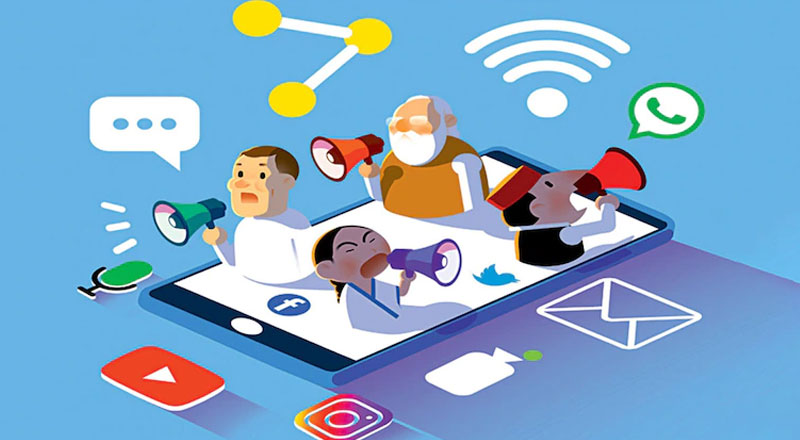Asoke K Laha, President & CEO of Interra Information Technologies
The other day I was asked to give a presentation to a gathering on how to lead a corporate entity during uncertain times. When I thought over the subject, many ideas struck me. Should I build the template of the presentation keeping the Covid-19 pandemic in the background and how corporates have modulated their messages to the employees and other stakeholders? Finally, I made up my mind to lace my presentation with hard facts and yet give the participants optimism that every stage is dynamic and not static.
The first thing that occurred to me while marshalling my thoughts, was to get a fair idea of what uncertainty is. Does the uncertainty that has befallen now have any parallels in the recent past or in the remotest past, if one has to take a time frame of 50 years or so? My sense is that nothing that had happened in the last five decades had any resemblance to what is happening now. That can be explained by looking at two things; one the coverage and the destruction that it had caused. The coverage of the pandemic related debilitating factors are global in the sense no country could escape from that. Second was the duration of the event. After a lapse of more than one and half years, the pandemic continues to be fatal in several parts of the country, particularly in South Asia, which includes India.
Now my effort was to zero in an entity or a country which could insulate its workers/ citizens from the impact of the pandemic. I could not see anyone fitting the bill. The messaging that things would fall into their slots in course of time would be too optimistic an appeal, given that there is no precise estimate when the pandemic would bottom out. I decided that I would cite a few examples before them and leave the audience to draw their own conclusions.
I thought I should have a few case studies to explain how the governments, corporations and individuals coped with the pandemic and tried to overcome that. My research to find out a few success stories in corporate leadership during uncertain times landed me into a classic example of how a corporate entity- an airline run by the Ethiopian government – had led from the front in shielding the airline during most difficult times.
The course resorted to by the Ethiopian National Airline was different and a trend setter. It had converted fourteen of its passenger aircrafts into freighters to carry medical supplies, food stuff etc across geographies. It flew to different destinations carrying medical help from various countries. It fully utilized the opportunities for movement of cargoes. Not only had the airline managed to escape the financial difficulties faced by its counterparts in many countries, it had also received accolades for its sterling performance for hauling cargoes during difficult times. Later, a number of airlines including from India tried to follow the Ethiopian. That way it sets a trend for others to follow.
A number of national airlines across the world including in Africa, such as South African Airlines etc are being liquidated and are facing massive problems restructuring and reviving them. Back in India, our efforts to sell the now debunked Jet Airways did not find any worthy suitors. That is also the case with the national carrier Air India, which has been put under block for quite some time now. I feel the example of Ethiopia should be subjected to a lot of scrutiny not only by the leading airlines in the world but also by the ivy business schools, who normally keep monitoring only when big names are involved.
I also tried to cull out the examples of some IT companies. Taking advantage of remote working in the midst of a pandemic, some IT companies prioritized virtual wellness programming and initiatives to help ease the stress and anxiety of working from home during a pandemic. They organized virtual fitness and meditation classes for employees to address their physical and mental health.
I tried to collate information of such software companies that took a lead in that direction. A software company BlueBeam offers in-person bi-weekly yoga & Tai Chi classes, chair massages, and incentivized fitness challenges to its employees while working from home. The company is providing free access to fitness videos, virtual team happy hours and game nights, on-demand webinars, and in-person sessions on mental health & wellness with various partners. The peer review of these companies found that they are doing well both in terms of sales and customer relations. Does it mean a change in strategy during uncertain times can help employers and employees?
The digital writing assistant company – Grammarly – is offering everything from extra days off across their offices, looks after mental health, fitness, yoga, nutrition videos for stress reduction, virtual counselling sessions and anxiety workshops for stress reduction. The company also offers support for employees who are parents with group web sessions. It also holds weekly “Good vibes Monday” a snippet curated by their People team sharing a list of positive events around the world to show how people are coming together during this time and zoom calls with a mediation expert.
The manufacturing company 3 M is prioritizing its employee wellness programs during COVID-19 with boosting their mental health wellness initiatives. It held a webinar on “Coping with Anxiety and Supporting Well-being During COVID-19”.
Citi is providing a special compensation award to more than 75,000 colleagues globally to help ease the financial burden of the pandemic. They are also extending vacation carryover since the employees will not be able to avail such facilities now.
SAP employees are staying connected and encouraged through Facebook Live sessions, virtual fitness classes, and music concerts. SAP North America employees in Canada and the USA were given an extra day off as a thank you and recognition of experiencing COVID-19.
Salesforce launched several new wellness programs and initiatives in support of its employees during COVID-19. Under, Employee Assistance Programs (EAP) – Salesforce provides access to free Employee Assistance Programs. EAP provides resources and immediate support (including free face-to-face or video conferencing counselling sessions) for a broad issue affecting mental and emotional wellbeing, such as family problems, workplace stress, grief, anxiety, depression, addiction management, and alcohol and substance use.
I always feel that uncertain times bring the best in people. It forces one to create new ecosystems that can help people address the current problems and evolve new methodologies for facing challenges in the future. I strongly feel that more companies in India should start engaging their employees in the new vistas of stress management that can help shore up employee’s confidence, productivity and many other things. One thing that I decided is that I will continue organizing these virtual classes in my organization beyond the pandemic since I am convinced that they have many spin offs, particularly in places where there are a large number of employees to be in touch with everyone, which is impossible for a chief executive physically.





